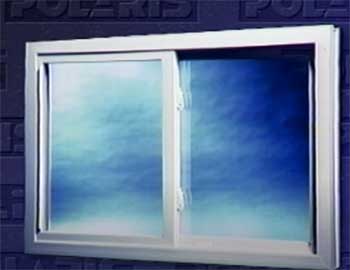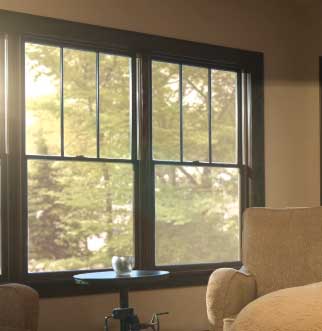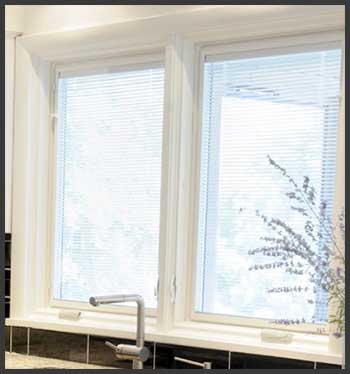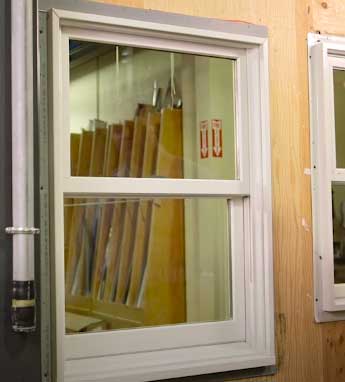When it comes to replacing the windows in your home, two big names stand out: Polaris and Andersen. But which brand offers the better windows?
In this comprehensive guide, we’ll compare Polaris and Andersen windows side-by-side, looking at performance, features, cost, warranties, and more.
Read on for an in-depth analysis of two of the top window manufacturers to help you make the right choice for your home.
A Brief Comparison Table
| Feature | Polaris Windows | Andersen Windows |
| Frame Material | Rigid all-vinyl | Fibrex (vinyl/wood composite) |
| Glass Options | Double pane Low-E366 standard, optional triple pane | Wide range of High-Performance glass including triple pane |
| Testing & Certification | Limited testing | Extensively tested, NFRC certified |
| Warranties | 10 years on glass, Limited lifetime on frame | 20 years on glass, Limited lifetime on frame |
| Cost | 25-40% lower than Andersen | 40-60% higher than Polaris |
| Installation | Nails-fin only | Flanged or nails-fin |
| Exterior Colors | White or beige | Many factory finish options |
| Interior Types | Vinyl with woodgrain laminate | Real wood species like pine, oak, maple |
| Window Types | Primarily double-hungs and sliders | Many operating styles and shapes |
| Customization | Light customization available | Very flexible customization |
Polaris Windows Overview
Polaris Windows is a division of ProVia, a family-owned manufacturer of doors and windows located in Sugarcreek, Ohio. Polaris offers a full line of vinyl replacement windows designed for energy efficiency, durability, and customization. Here are some key features of Polaris windows:

- Vinyl frame and sash – Made from a premium vinyl compound called Vytex for increased weathering properties. Rigid vinyl resists rotting, swelling, shrinking, and warping.
- Fusion welded corners – Corners on the window sash and frame are fused together for added strength and improved seal.
- Insulated glass units – Polaris double pane windows feature two panes of glass separated by an airspace and sealed with a warm edge spacer. The airspace provides insulation.
- Solar gain low-E glass – Polaris windows come standard with low-E glazing that helps control heat gain and block UV rays. Optional triple-pane glass and argon gas fill are available.
- Variety of colors – Polaris offers exterior vinyl in white or beige. Interior wood laminates come in oak, cherry, or maple finishes.
- Custom options – Choose from various grid patterns, glass types, hardware finishes, and more. Polaris windows can be built to fit any size opening.
Overall, Polaris windows are an affordable vinyl replacement window designed to be energy efficient and durable. They offer ample customization options to match any home’s style.
Andersen Windows Overview
Andersen Corporation, headquartered in Bayport, Minnesota, is one of the most recognizable window and door brands in the industry. Andersen has been manufacturing windows since 1903. Here are some of the key features of Andersen windows:

- Fibrex composite material – Andersen’s patented Fibrex material blends vinyl and wood fibers for stability and thermal efficiency. The material is used in Andersen’s 400 Series windows.
- Variety of window types – Andersen has many different window collections including double-hung, casement, awning, picture windows, specialty windows, and more.
- High-Performance glass options – Low-E4, Low-E4 Sun, and HeatLock low-E glass help manage solar heat gain and UV protection. Optional triple pane glass and gas fills provide enhanced insulation.
- Finishing options – Exterior cladding options include over a dozen exterior color choices. Interior wood species such as pine, oak, maple, and cherry are available.
- Limited lifetime warranty – All Andersen window components have a Limited Lifetime Warranty including the glass units (20 years for commercial projects).
Overall, Andersen offers exceptional performance and aesthetics. Andersen windows feature premium materials and craftsmanship, along with options to customize each window. The limited lifetime coverage provides peace of mind.
Key Differences Between Polaris And Andersen Windows
Now that we’ve provided an overview of each brand, let’s take a closer look at how Andersen and Polaris windows compare across some important categories:
- Materials
While both use vinyl in their constructions, Andersen takes a blended approach with its Fibrex material on many of its windows while Polaris uses a rigid all-vinyl frame.
The Fibrex in Andersen windows adds structural stability from the wood fiber component while maintaining the weather-resistance of vinyl. Polaris’ vinyl is engineered specifically for performance and durability as well.
- Glass Options
Both brands offer high quality Low-E coated glass to help manage solar heat gain and energy efficiency. Andersen has a wider range of specialty glass options including triple pane, HeatLock, and SmartSun glass.
Polaris does offer triple pane and upgrade Low-E coatings, but not the full suite of glass technologies that Andersen provides.
- Performance Testing
Andersen windows undergo extensive performance testing and are certified through the National Fenestration Rating Council with ratings for U-factor, solar heat gain coefficient, visible transmittance, air leakage, and condensation resistance.
Polaris windows are tested for air and water infiltration ratings, but do not go through NFRC certification.
- Warranties
The warranties differ quite a bit between the two brands. Andersen offers a Limited Lifetime Warranty on all components including the Fibrex frame and hardware.
The insulating glass units have a 20-year warranty. Polaris provides a Limited Lifetime Warranty on the vinyl frame and a 10-year warranty on the sealed glass units.
- Prices
Andersen windows are sold through a network of independent dealers while Polaris windows are only available directly from ProVia. Andersen windows tend to cost more upfront, with typical installed prices ranging from $600 up to $2000 per window depending on size, features, and options.
Polaris vinyl windows are very competitively priced, often running 25-40% less than comparable Andersen windows.
- Appearances
With its Fibrex construction, Andersen windows can emulate the aesthetics of wood windows with the same interior pine, oak, maple, and cherry wood species options.
Polaris windows take a more simplistic vinyl window approach focused primarily on white or beige exteriors. Andersen offers more exterior color choices.
- Configurations
Andersen’s expansive window offerings provide more operational styles and configurations than Polaris. Andersen has double-hungs, casements, awnings, gliding, bay and bow, picture and transom windows, while Polaris focuses mostly on double-hungs and sliders.
Andersen also provides more customization flexibility.
Now that we’ve directly compared the two brands, let’s evaluate each in more depth including their strengths and weaknesses.
In-Depth Analysis of Polaris Windows
Polaris Strengths

- Budget-friendly vinyl windows – Polaris manages to keep costs low while still using quality vinyl construction and insulation. Excellent option for projects on a tight budget.
- Energy efficient components – Fusion welded corners, multi-chamber frame design, and Low-E glass improve thermal performance. Good for reducing energy costs.
- Light customization available – Choose from a few different interior/exterior color palettes and grid options. Allows personalization without a huge upcharge.
- Easy to clean vinyl – The smooth vinyl interior and exterior on Polaris windows is easy to wipe down and requires little maintenance.
- Superior vinyl formulation – Polaris uses premium Vytex vinyl for improved weathering, durability, and color retention versus cheaper vinyl compounds.
- Quick production/delivery – As part of a made-to-order factory direct model, Polaris can produce windows quickly to reduce project lead times.
Polaris Weaknesses
- Limited glass choices – Only one or two Low-E options. No triple pane or other advance glass technologies available.
- Shorter warranties – The 10-year coverage on glass units is less reassuring than Andersen’s 20-year or lifetime warranties.
- Minimal performance testing – Without NFRC certification, quantifiable data on efficiency and performance is lacking.
- Fewer exterior color options – Only white or beige exterior color choices limits customization.
- Not widely available – Retail availability is limited since Polaris windows are only sold through ProVia.
- No wood interiors – Those desiring real wood interiors may be disappointed with the laminate interiors that mimic wood grain.
In-Depth Analysis of Andersen Windows
Andersen Strengths

- Superior glass technologies – Industry-leading glass options like HeatLock® Low-E provide triple pane efficiency. Excellent thermal performance.
- fibrex ® material – The composite Fibrex material brings together the best attributes of wood and vinyl for visual appeal, strength, and stability.
- Heirloom-quality craftsmanship – Andersen windows are built to last with attention to detail and craftsmanship lacking in many vinyl window lines.
- Wide range of window types/operations – Huge selection of double-hungs, casements, awnings, fixed picture windows, specialty shapes and more.
- Extensive customization – Interior wood species, exterior colors, hardware finishes, grille patterns – you name it. Andersen windows can be completely customized.
- Industry-leading warranties – Limited lifetime coverage on Fibrex components and 20 years on glass offers real peace of mind.
- Superior air sealing – Special attention is given to air sealing, resulting in excellent air infiltration ratings and energy savings.
Andersen Weaknesses
- More expensive – Premium features and construction come at a price – be prepared to pay upwards of 40-60% more for comparable Andersen windows.
- Limited vinyl exterior colors – Most Fibrex windows only come in White or Sandtone exterior colors. Wood units offer 15+ factory colors.
- Can be drafty if not properly installed – Andersen windows require meticulous installation and flashing to achieve advertised air tightness.
- No standard nails-only fin – Andersen windows require a flanged installation which adds complexity versus nails-only fin.
- Limited dealer availability – Due to exclusivity agreements, Andersen dealers are not as readily accessible as big box retailers.
Which Is The Better Choice?
So when comparing Polaris vs Andersen windows, which brand comes out on top? Here are a few key considerations:
- For premium performance and craftsmanship, Andersen is the winner. Fibrex construction and advanced glass technologies enable exceptional efficiency. Real wood interiors provide heirloom-quality aesthetics.
- For the most affordable vinyl replacement windows, Polaris can’t be beat. You simply won’t find a cheaper vinyl window with the same structural integrity as Polaris.
- For maximizing energy efficiency, Andersen wins out. Triple pane glass and Fibrex material outperform standard vinyl windows. Polaris is still a good energy saver, but Andersen windows go the extra mile.
- For the simplest installation, Polaris nails-fin windows get the nod. Andersen windows require a flanged installation. But for air tightness, Andersen’s installation requirements result in better seals.
- For hassle-free warranty service, Andersen comes out ahead. Their limited lifetime coverage is bullet-proof while Polaris has many warrantly stipulations.
Both Andersen and Polaris make great replacement windows, so you really can’t go wrong with either brand. As you can see, there are lots of trade-offs to consider.
Homeowners on a tight budget will likely prefer the Polaris vinyl windows, while those wanting best-in-class performance and service will lean towards Andersen. Use this comparison as a guide, weigh the pros and cons, and determine which brand aligns closest with your needs and priorities.
Frequently Asked Questions (FAQ)
Some brands that are comparable to Andersen in terms of quality and performance include Pella, Marvin, Milgard, Jeld-Wen, and Simonton. Each offers similar window styles, installation options, warranties, and efficiency capabilities as Andersen but at different price points.
Andersen, Pella, and Marvin are generally considered among the best window brands, but several factors including your climate, home style, and budget should drive the decision. For cold climates, look for efficient triple pane glass and composite materials like Andersen Fibrex.
Polaris windows come standard with double pane Low-E366 glass which has a solar heat gain coefficient of 0.27 to block solar radiation. Optional triple pane glass and Low-E coated Argon gas filled units are also available from Polaris for increased efficiency.
Yes, ProVia’s Polaris line of vinyl windows are a good quality and affordable option for window replacement. Their vinyl formulation and fusion welded corners result in durable and energy efficient windows. Limited lifetime warranties provide peace of mind. Overall a great value vinyl window.
For many homeowners, Andersen’s higher-grade materials, construction, and warranties justify the added investment over cheaper vinyl alternatives. But not everyone needs ultra high-end windows, so determining your needs and project goals is key before deciding.
Final Thoughts
We hope this comprehensive Polaris vs Andersen windows comparison helps guide your replacement window purchase decision. Let the features and benefits of each brand outlined here assist you in selecting the ideal windows to match your home and performance requirements while staying within budget.
Both Polaris and Andersen make great windows, so the choice ultimately comes down to your specific needs and circumstances.

Yes you did, very informational. Thinking Polaris is going to be best for me. Being 70 did help with my decision.
Thanks again